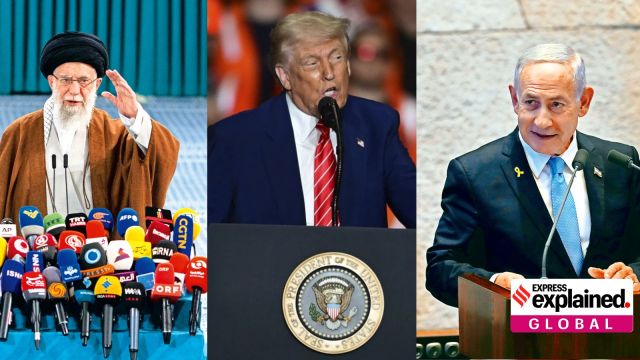Israel–Iran Strike 2025

- 15 Jun 2025
In News:
On June 13, 2025, Israel launched a large-scale military strike on Iran, targeting nuclear and military sites in Tehran. The attack resulted in the deaths of Iran’s Revolutionary Guard chief and two top nuclear scientists, marking a sharp escalation in the long-running shadow conflict between Israel and Iran.
Backdrop: Iran’s Nuclear Programme and Global Concerns
Iran claims its nuclear programme is peaceful, aimed at energy production and medical research. However, international skepticism remains high. The International Atomic Energy Agency (IAEA) recently declared Iran in breach of its non-proliferation obligations for the first time in two decades, citing a lack of transparency, failure to account for undeclared nuclear material, and enrichment of uranium up to 60% purity, dangerously close to weapons-grade (90%). According to reports, Iran possesses enough stockpiled uranium to build up to nine nuclear weapons, raising alarm globally.
Israel’s Strategic Calculus and the Execution of the Strike
Israel has long opposed Iran’s nuclear ambitions and the 2015 nuclear deal (JCPOA). The June 2025 assault was the culmination of years of covert operations, including the 2020 assassination of Mohsen Fakhrizadeh and earlier strikes on Iran-linked targets. The latest strike, targeting nuclear and missile facilities as well as residences of top scientists and generals, is seen as the most severe blow to Iran since the 1979 revolution.
The collapse of Iran’s regional deterrence network—its so-called “axis of resistance”—following the fall of Syrian President Bashar al-Assad in December 2024 played a critical role. With Syria no longer serving as a strategic corridor between Tehran and Hezbollah, Israel perceived an opportune moment to act.
US Foreign Policy Shift and Trump’s Role
The re-election of President Donald Trump in 2024 introduced a more confrontational posture toward Iran. Although the U.S. initially delayed the planned May strike to explore diplomacy, the failure of talks led to U.S. backing for the June operation, using military pressure as leverage for a new nuclear deal demanding Iran's full disarmament.
Regional Fallout and Global Economic Implications
The strike triggered an immediate 8% rise in global oil prices, exposing energy vulnerabilities across oil-importing nations. Particularly affected is India, which imports over 80% of its crude oil. Though India imports little directly from Iran, it depends heavily on Gulf producers like Iraq, Saudi Arabia, and the UAE, whose exports transit through the Strait of Hormuz—a vital chokepoint now under threat.
Further, disruptions in Red Sea and Suez Canal shipping routes may force Indian exporters to reroute via the Cape of Good Hope, increasing transit times by 15–20 days and pushing shipping costs up by 40–50%.
Market Response and Strategic Concerns
While oil prices are expected to stabilise due to global reserves and supply diversification, gold prices surged above ?1 lakh per 10g as investors moved to safer assets. The broader geopolitical uncertainty may stoke inflationary pressures, affecting global and Indian economic stability.
Conclusion
The Israel–Iran conflict, while regionally contained for now, holds serious global implications—challenging non-proliferation efforts, disrupting energy security, and threatening global economic stability. For India, the crisis underscores the need for diversified energy sourcing, geopolitical agility, and resilient export infrastructure to mitigate such strategic shocks.
